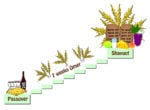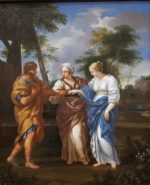Shemini,Phase Space,Hamiltonian Mechanics: Kabbalah and Physics of Seven and Eight
By Alexander Poltorak Abstract The Torah portion of Shemini records the climactic eighth day of the Tabernacle’s dedication, the moment when divine fire finally descends.

